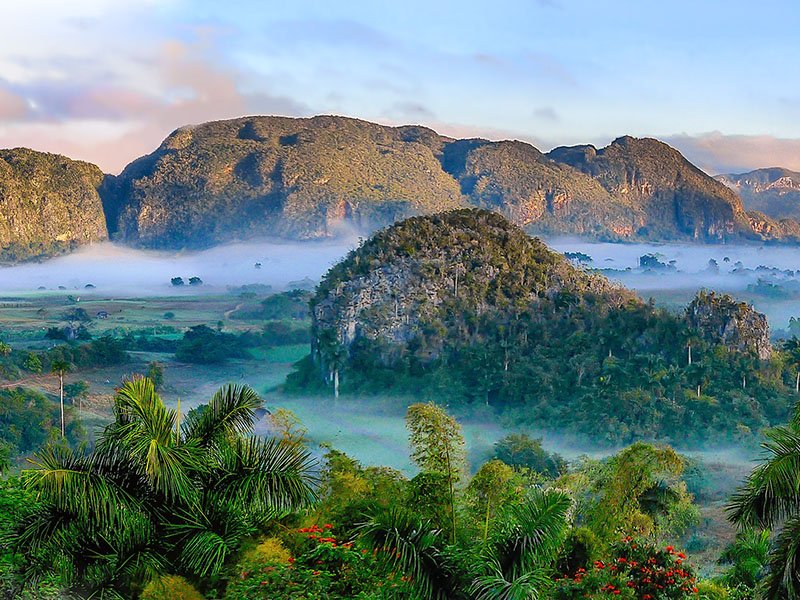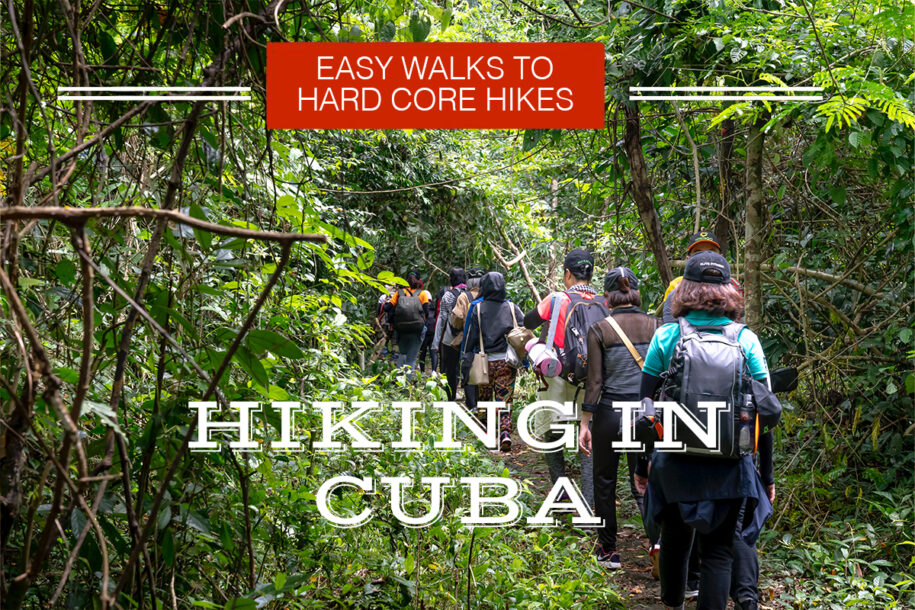With its lush landscapes, rugged mountains, and pristine coastline, Cuba offers a paradise for hiking enthusiasts seeking adventure off the beaten path.
As a travel writer with expertise in Cuba, I invite you to embark on a journey through the island’s diverse terrain, from verdant forests to towering peaks and hidden waterfalls.
In this comprehensive guide to hiking in Cuba, we’ll explore the best trails, essential tips, and unforgettable experiences that await intrepid travelers.
Table of Contents
Exploring Cuba's Natural Wonders
Cuba’s natural beauty is unparalleled, and hiking provides the perfect opportunity to immerse yourself in the island’s stunning landscapes. From the dramatic limestone formations of Viñales Valley to the untamed wilderness of Sierra Maestra, there’s no shortage of breathtaking scenery to discover.
Lace up your hiking boots and prepare to traverse dense forests, meandering rivers, and rugged mountain paths as you uncover Cuba’s hidden gems.
Top Hiking Destinations in Cuba

Viñales Valley
Known for its iconic mogotes (limestone hills) and tobacco fields, Viñales offers a variety of hiking trails suitable for all skill levels. Trek through lush valleys, explore mystical caves, and soak in panoramic views of the picturesque countryside.
Sierra Maestra
For experienced hikers seeking a challenge, the Sierra Maestra mountain range beckons with its rugged terrain and towering peaks. Follow in the footsteps of Che Guevara and Fidel Castro as you ascend Pico Turquino, Cuba’s highest summit, and revel in the breathtaking vistas of the surrounding landscape.
Topes de Collantes
Nestled within the Escambray Mountains, Topes de Collantes is a haven for nature lovers and outdoor enthusiasts. Follow meandering trails through cloud forests, discover hidden waterfalls like El Nicho, and encounter diverse wildlife in this enchanting natural paradise.
El Yunque
Rising majestically above the lush forests of Baracoa, El Yunque offers a scenic hiking experience unlike any other in Cuba. Trek to the summit for panoramic views of the surrounding coastline, or explore the network of trails winding through the dense vegetation of Alejandro de Humboldt National Park.
Cayo Levisa
For a unique coastal hiking experience, venture to Cayo Levisa, a pristine island off Cuba’s northwestern coast. Stroll along sandy beaches, explore mangrove forests, and snorkel in crystal-clear waters teeming with marine life.
Tips for Hiking in Cuba
- Pack essentials: Bring plenty of water, snacks, sunscreen, insect repellent, and a first aid kit.
- Wear appropriate gear: Sturdy hiking boots, lightweight clothing, and a hat are essential for staying comfortable on the trail.
- Respect nature: Leave no trace, stay on marked trails, and avoid disturbing wildlife or fragile ecosystems.
- Check weather conditions: Cuba’s tropical climate can be unpredictable, so be prepared for sudden changes in weather and plan accordingly.
- Travel responsibly: Respect local customs, follow park regulations, and support sustainable tourism practices during your hiking adventures in Cuba.
Frequently asked questions
What are the best hiking trails in Cuba?
Some of the best hiking trails in Cuba include those in Viñales Valley, Sierra Maestra, Topes de Collantes, El Yunque, and Cayo Levisa, each offering unique landscapes and experiences for hikers.
Is hiking in Cuba suitable for all skill levels?
Yes, Cuba offers hiking trails suitable for all skill levels, from gentle walks through scenic valleys to challenging treks up rugged mountains. It’s essential to choose trails that match your fitness level and experience.
Are there guided hiking tours available in Cuba?
Yes, there are guided hiking tours available in Cuba, led by experienced local guides who can provide insights into the flora, fauna, and cultural significance of the areas you’ll be exploring. These tours offer a safe and informative way to discover Cuba’s natural wonders.
What should I pack for a hiking trip in Cuba?
Essential items to pack for a hiking trip in Cuba include sturdy hiking boots, lightweight clothing, a hat, sunscreen, insect repellent, plenty of water, snacks, a first aid kit, and a map or GPS device. It’s also advisable to pack rain gear and a flashlight, depending on the trail and weather conditions.
Are there any safety considerations when hiking in Cuba?
While hiking in Cuba is generally safe, it’s essential to take precautions such as staying hydrated, staying on marked trails, being aware of wildlife, and avoiding hiking alone in remote areas. It’s also advisable to check weather conditions before setting out and to inform someone of your hiking plans.
Conclusion
Hiking in Cuba offers a unique opportunity to connect with nature, explore remote landscapes, and immerse yourself in the island’s rich cultural heritage.
Whether you’re scaling mountains, trekking through forests, or meandering along coastal trails, the experiences you’ll encounter are sure to leave a lasting impression. So lace up your boots, pack your sense of adventure, and get ready to discover the wonders of hiking in Cuba firsthand.
